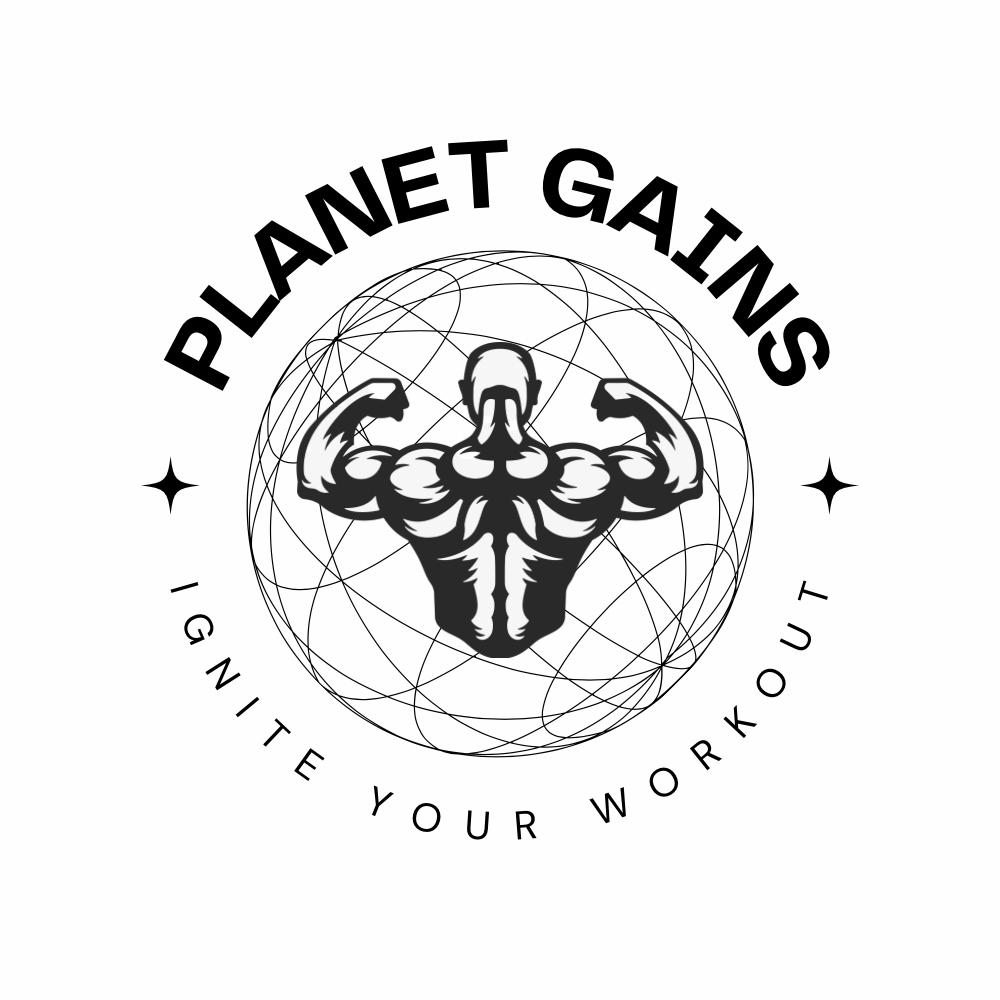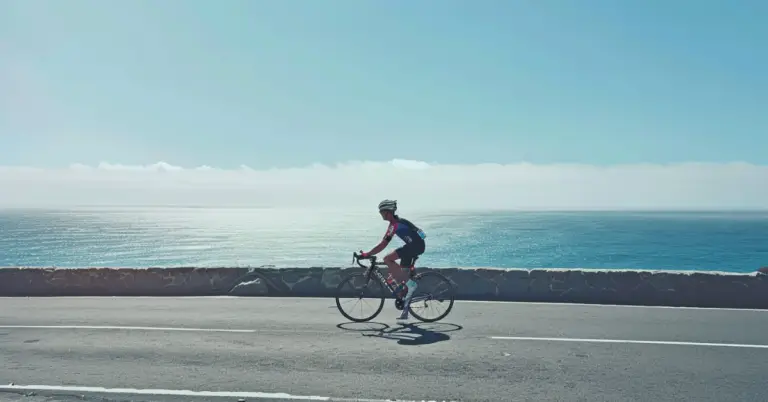📦 FREE Shipping
How to Get Faster at Cycling: Best Techniques For Speed 2024!

I’ve discovered that upping my cycling speed not only injects a thrill into my rides but also boosts my overall fitness level. You might wonder: How to Get Faster at Cycling?
It’s exhilarating to feel the wind against my face as I surpass my previous speed records. To become a faster cyclist, I’ve realized it involves a blend of technique, strength, and strategy. Beyond the basic push harder on the pedals, there are smart ways to cut through the air more efficiently, a practice US cyclists call ‘tucking in.’ By refining my riding position and making my movements more aerodynamic, I can significantly reduce wind resistance and save energy, allowing me to increase my speed.

Conditioning my body to maintain better speed over longer distances is another aspect I work on. This means regular maintenance of my bike—keeping it clean and ensuring it’s in peak condition. A well-maintained bike translates into smoother rides and, of course, faster speeds. Moreover, when it comes to training, I’ve learned that structured riding time and varying my workouts with intervals and endurance rides are key to building the kind of speed and stamina that makes cycling even more fun.
Riding with others has been a game-changer for me as well. Not only does it add a social element to my training, but it’s an effective way to push my limits. By taking turns at the front of a group, I can experience drafting, which conserves energy. Then, when it’s my turn at the front, I can test out my improved speed and endurance. Sharing the workload with fellow cyclists is a fantastic way to become faster, and it’s incredibly satisfying to see the progress I make ride after ride.
Fundamentals of Cycling Training
To get faster at cycling, I’ve learned that a strategic approach to training is crucial. It’s all about the smart combination of structured workouts, adaptive training plans, and setting achievable goals to see improvements in speed and efficiency.
Understanding Training Plans
Choosing the right training plan is essential for progress. I always look for a plan that’s tailored to my current fitness level and cycling goals. A training plan should balance intensity and rest, and often includes a mix of long rides, recovery days, and interval training. Intervals, where I vary between high-intensity bursts and low-intensity recovery, can dramatically boost my watts and overall cycling efficiency.
Incorporating Structured Workouts
Structured workouts are the backbone of any good cycling training routine. By incorporating these into my weekly schedule, I make the most of my training time. For instance, I use interval training to improve my speed: alternating short, high-intensity efforts with periods of rest. This has helped me increase not just my pace, but also my power output, measured in watts.
Setting Realistic Goals
I always set realistic goals to stay motivated and track my progress. Whether it’s shaving seconds off my time trial or increasing my average speed, having clear objectives keeps me focused. I adjust my goals as I improve, ensuring that they are always within reach but still challenge me to push my limits.
Optimizing Bike Performance

I know from experience that fine-tuning your bike can make a significant difference in your speed on the road. By focusing on achieving a perfect bike fit, ensuring your drivetrain is well-maintained, and choosing the right equipment, you’re setting up for not only a faster ride but also a more efficient and enjoyable cycling experience.
Achieving the Perfect Bike Fit
Bike fit is crucial. I’ve learned that a bike that fits well reduces unnecessary strain and increases power output, making you faster. It’s all about aligning the touchpoints – saddle, pedals, and handlebars – to my body:
- Saddle Height: Adjust so my leg has a slight bend when the pedal is at its lowest position.
- Reach: Make sure I can comfortably reach the handlebars with a slight bend in my elbows.
- Handlebar Height: This can change the aerodynamics; I usually aim for a position that balances comfort with an aerodynamic profile.
Tuning Up Your Drivetrain
A clean and well-maintained drivetrain minimizes friction and maximizes power transfer from my legs to the wheels. Here’s how I keep it in top condition:
- Regular Cleaning: Dirt and grime equal resistance. Cleaning my chain, cassette, and chainrings can prevent this build-up.
- Lubrication: A lubricated chain rolls smoothly, reducing effort on my part.
- Wear Check: Replacing worn parts helps avoid power loss and maintains bike handling.
Choosing the Right Equipment
Selecting equipment with speed in mind makes a noticeable difference. My choices always aim to strike a balance between reducing rolling resistance and improving aerodynamics:
- Tires: High-quality tires with a high thread-per-inch (TPI) count can save watts, making me faster.
- Aero Helmet and Clothing: Wearing an aero helmet and tight-fitting clothing reduces drag.
- Power Meter: Installing a power meter helps me train smarter by monitoring my output and ensuring I’m riding at my best.
By diligently addressing these elements, I’ve been able to ride faster and more efficiently. Investing the time in bike optimization pays off with every pedal stroke.
Mastering Cycling Techniques and Mechanics
To cycle faster, I’ve learned to hone in on specific techniques that make a huge difference. Here’s a breakdown of the mechanics I’ve mastered to level up my cycling game.
Improving Pedaling Efficiency
I’ve noticed that smoother pedaling comes from a mix of technique and hardware. I make sure my pedals are in top condition, and I focus on maintaining a circular motion rather than just pushing down. This ensures I’m using less energy for more power.
Cornering and Handling Skills
Cornering effectively means mastering the art of braking, leaning, and exiting the turn. By applying brakes before the turn and not during, I maintain my momentum. Leaning my bike into the curve, I use less force to navigate through, keeping my upper body relatively upright for stability.
Climbing and Uphill Strategies
When I face an uphill challenge, it’s all about conserving energy and using gravity to my advantage. I shift to a gear that allows me to maintain a consistent cadence. When the grade eases up, I increase my efforts slightly to carry more speed into the next climb, always mindful of how drafting can reduce the wind resistance I face.
Health, Fitness, and Recovery
When I’m aiming for faster cycling times, I focus on three crucial elements: precise nutrition, sufficient rest and recovery, and a balanced training regimen involving cross-training and flexibility. Each of these aspects is interwoven with the others, and perfecting them can lead to significant gains in my average speed on the bike.
Nutrition for Cyclists
To fuel my energy needs effectively, I’ve learned to pay close attention to my food intake. Carbohydrates are essential for maintaining my glycogen stores, the primary energy source during long rides. Immediately after intense training, consuming a carb-rich snack within 30 minutes maximizes my recovery. Protein is also a staple in my diet—it’s not just for building muscle. It helps speed up glycogen replacement and aids in muscle repair.
- Post-Ride Snack Example:
- Carbs: Banana or rice cake.
- Protein: Greek yogurt or a handful of almonds.
Importance of Rest and Recovery
My fitness isn’t just about the miles I clock in; it’s equally about the rest I give my body. Adequate sleep is my best ally, providing the downtime my muscles need to repair and strengthen. On my rest days, I resist the urge to push through and instead give myself permission to recover fully, balancing my heart rate and preventing overtraining. This balance is vital for steady fitness improvement.
- Rest Day Activities:
- Short, leisurely walks.
- Gentle yoga for relaxation and stretching.
Cross-Training and Flexibility
Diversifying my workouts with cross-training contributes to a more rounded exercise routine, enhancing my overall fitness and injury prevention. Activities like swimming and running help build cardio capacity without the repetitive strain cycling might impose. I also integrate flexibility exercises into my routine, including stretches and yoga, to ensure muscle balance and a comfortable range of motion which can contribute to a better cycling posture.
- Flexibility Routine:
- Daily stretching: Focus on hamstrings, quads, and hip flexors.
- Yoga: Twice a week for full-body flexibility and core strength.
Frequently Asked Questions about How to Get Faster at Cycling?
In this section, I’ll cover some of the most common inquiries I get about boosting cycling performance. From exercises to specific strategies, you’ll find answers to enhance your speed on two wheels!
What are the top exercises to improve cycling speed and endurance?
To amp up my cycling speed and endurance, I focus on interval training and hill repeats. High-Intensity Interval Training (HIIT) pushes my pace and power, while sustained climbs improve my muscular endurance.
What beginner tips can boost your speed in cycling?
For beginners, I suggest starting with proper bike fit to ensure comfort and efficiency. Then, work on pedal technique by maintaining a smooth circular motion, and include regular speed drills in your rides.
What strategies do triathletes use to cycle faster?
Triathletes often optimize their bike setup for aerodynamics, engage in brick workouts to transition smoothly from cycling to running, and incorporate periodization in their training—the art of timing workouts for peak performance.
How can you increase your cycling speed on flat terrain?
On flat terrain, I maintain an aerodynamic position, keeping my body low to reduce drag. I also work on pedaling at a higher cadence with consistent power output to maximize speed without overexertion.
What might be holding you back from cycling faster?
Common factors that might slow me down include a poorly maintained bike, incorrect tire pressure, and excess body weight. Technique is key, so I also look out for inefficient pedaling or excessive braking.
How does one consistently increase their average cycling speed?
To consistently up my average cycling speed, I ensure a combination of structured training, rest, and nutrition. I analyze my rides to identify areas for improvement and set incremental goals to steadily enhance performance.
Do you now know the answer to your question “How to Get Faster at Cycling”? Make sure to also read about How should cycling shoes fit? or How Can You prevent injury while cycling?.





